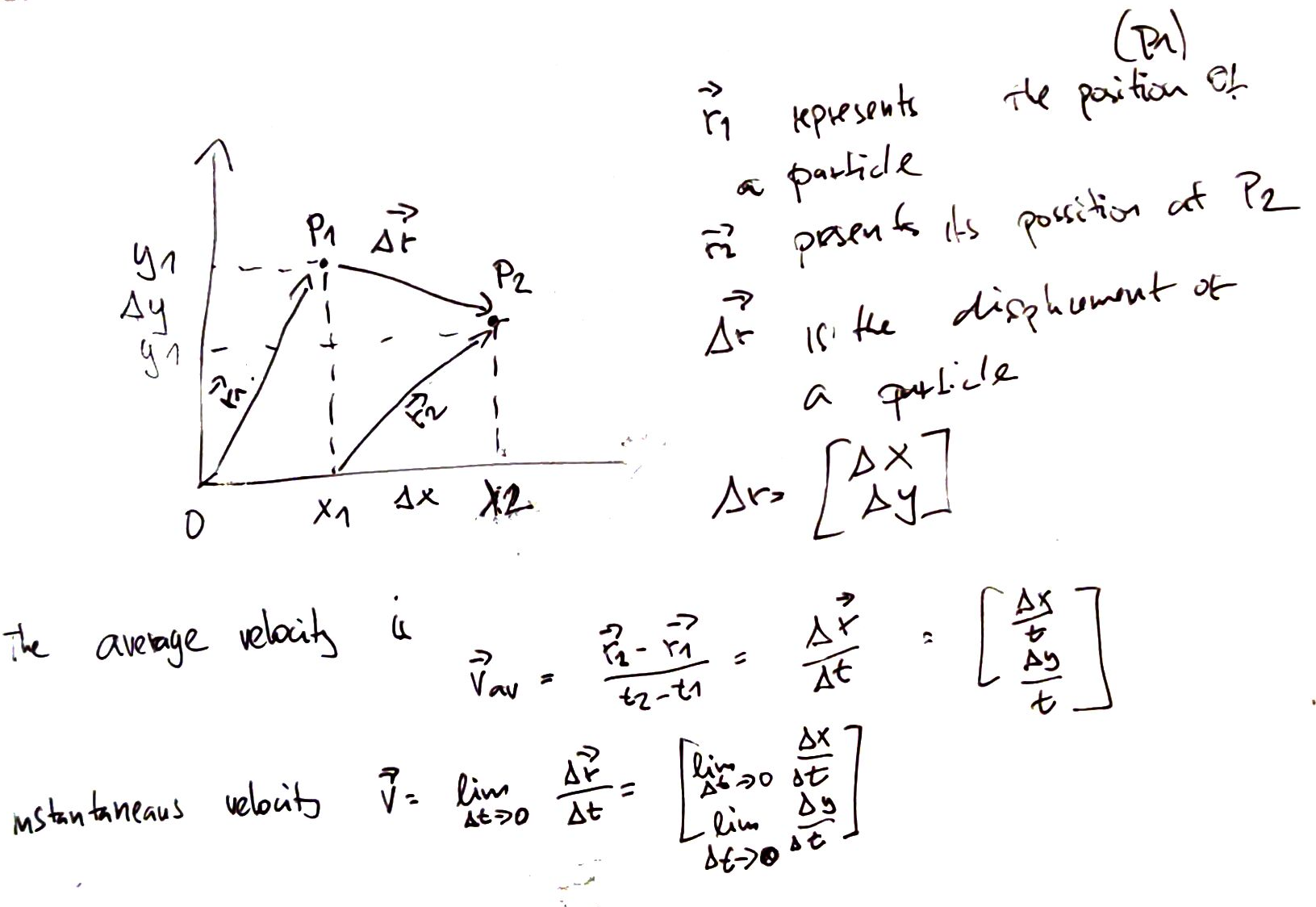Motion in plane¶
We extend the one dimensional motion into two dimensions. This generalizes than into tree dimensions.

The vector \(\vec{r}\) is the position vector (x,v coordinates). If we want to measure the distance a particle has traveled whe take its magnitude:
This can be viewed as displacement. We can now calculate the average velocity by:
This is a vector, and it has the same direction as \(\Delta \vec{r}\) and the magnitude equal to the magnitude of \(\Delta \vec{r}\) divided by \(\Delta r\). And its components are the average velocity along each axes.
The magnitude \(\Delta \vec{r}\) is always a straight line distance between two points, regardless of the actual path.
Instantaneous velocity¶
Here ve just take the limit:
Here \(\Delta \vec{r}\) becomes tangent to the curve of the trajectory.
Instantaneous speed¶
Is just the magnitude of the instantaneous velocity.
To express the angle we need to realize that \(v_x,v_y, v\) form a right triangle.
Acceleration in a Plane¶
Object is moving on a curved path in a plane

The final velocity \(v_2 = v_1 + \Delta v\) thus it is the sum of original velocity and the change in velocity.
Average acceleration¶
During a time interval the velocity of a particle changes by \(\Delta \vec{v}\)
Instantaneous acceleration¶
Acceleration always points to the concave side of the curved path.
When a particle moves in a curved path, it always has nonzero acceleration, even when it moves with constant speed. Acceleration is associated with change of speed, change of direction of velocity, or both.
If we know the components \(a_x, a_y\) we can find its magnitude: $\( |\vec{a}| = a = \sqrt{a_x^2 + a_y^2} \\ \)$
To get the direction it is enough to realize that \(a_x, a_y, a\) form a right triangle and just use trigonometry.
